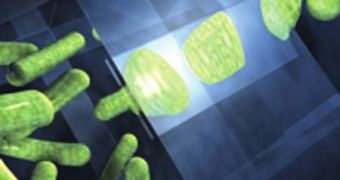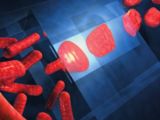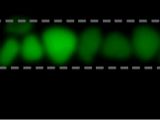Bacteria are known around the world for their amazing abilities to withstand even the harshest conditions our planet has to offer. They have been found living under miles of ice, near hydrothermal vents, and in volcano craters, and some species have evolved to have such an effect on our bodies, that we cannot live without them. But their ability to deform physically has been little studied. A new investigation has revealed that they are able to pass through nanoslits – openings just a few nanometers wide – without showing any difficulty in multiplying at the same time, ScienceDaily reports.
The bacteria proved to be remarkably elastic. They managed to take an almost completely flat shape while passing through the obstacle, but the massive deformities they showed in no way hindered their abilities to divide and produce new microorganisms. The newly found ability was demonstrated for the first time by researchers at the Delft University of Technology (DUT) Kavli Institute of Nanoscience, whose study was accepted for publication in the September 1st issue of the journal Proceedings of the National Academy of Sciences (PNAS), as a cover article.
In the experiments, the researchers constructed minuscule channels, only one micrometer or less in diameter, and measuring up to 50 micrometers in length. Inside, they placed strains of Escherichia coli (E. coli) and Bacillus subtilis (B. subtilis), which had been previously genetically modified to be fluorescent. Their behavior was then analyzed using a special microscope. What the experts saw amazed them. The bacteria was able to swim just as fast in the narrow channels as in a wide-open space, even if the pathway was only 30 percent thicker than its own diameter, of one nanometer.
When the bacteria was placed in a sub-micron-sized channel, where it could not swim, a strange thing happened. The team watched in disbelief as the microorganism started making its way out through nanoscale cracks in the tube, smaller than half its diameter. The way they did that was by simply growing and dividing.
“This took us totally by surprise. The bacteria become completely flattened. They have all sorts of peculiar shapes both in the channels and when they finally come out at the other side. What is really remarkable, however, is that in the channels, and therefore under extreme confinement, they continue to grow and divide at normal speeds. Apparently, their shape is not a determining factor for these activities,” Jaan Mannik, a postdoctoral researcher at the Institute, explains.
“Microbiologists do not generally engage in nanofabrication, which enables us to examine this area under controlled conditions, and nanoscientists usually know little about the behavior of bacteria. My colleague, Juan Keymer, an evolutionary biologist, and I are now trying to combine these disciplines in our new Department of Bionanoscience. And this is leading to all sorts of new discoveries,” DUT Professor Cees Dekker adds.

 14 DAY TRIAL //
14 DAY TRIAL // 

